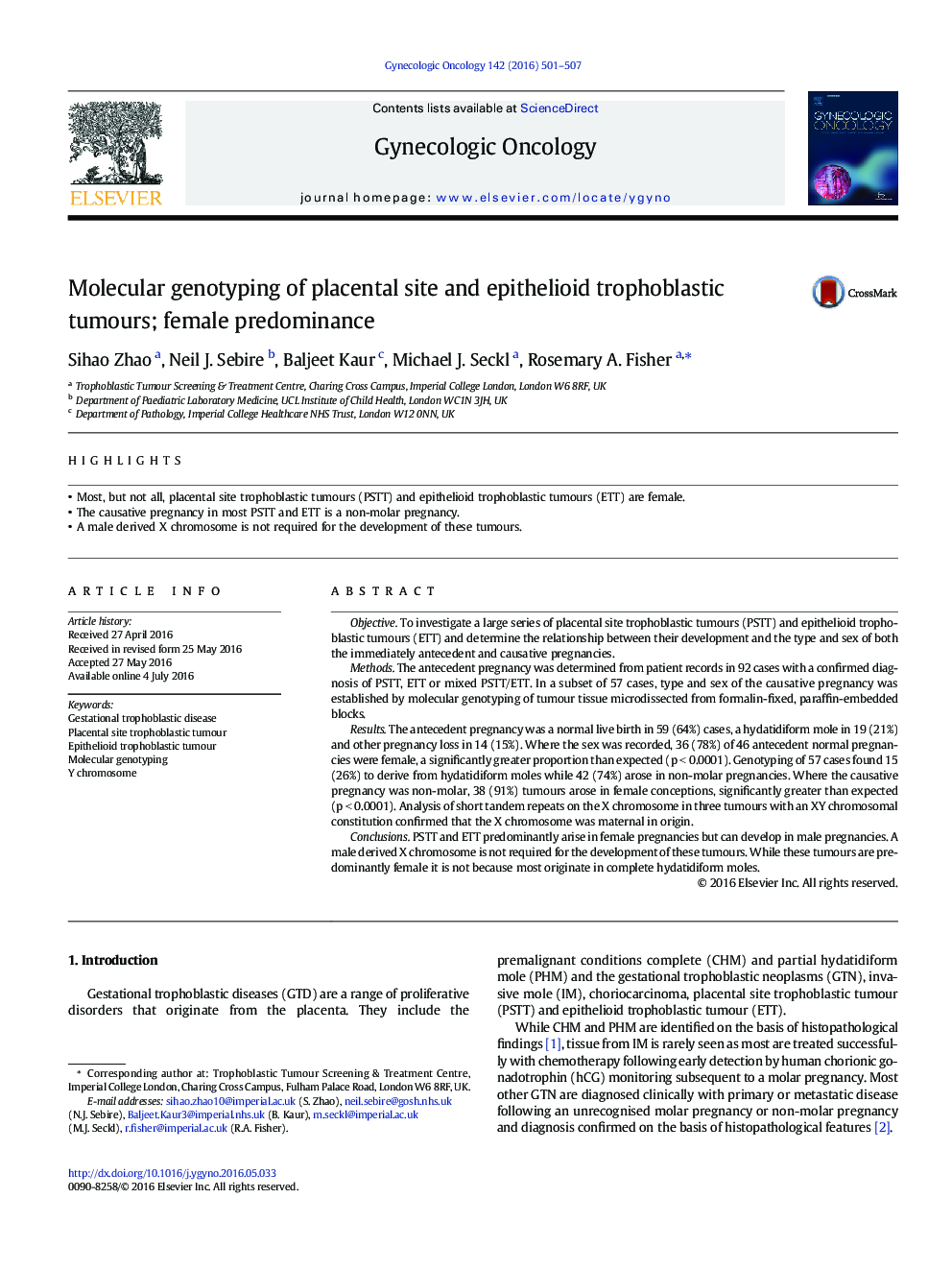| Article ID | Journal | Published Year | Pages | File Type |
|---|---|---|---|---|
| 6182992 | Gynecologic Oncology | 2016 | 7 Pages |
â¢Most, but not all, placental site trophoblastic tumours (PSTT) and epithelioid trophoblastic tumours (ETT) are female.â¢The causative pregnancy in most PSTT and ETT is a non-molar pregnancy.â¢A male derived X chromosome is not required for the development of these tumours.
ObjectiveTo investigate a large series of placental site trophoblastic tumours (PSTT) and epithelioid trophoblastic tumours (ETT) and determine the relationship between their development and the type and sex of both the immediately antecedent and causative pregnancies.MethodsThe antecedent pregnancy was determined from patient records in 92 cases with a confirmed diagnosis of PSTT, ETT or mixed PSTT/ETT. In a subset of 57 cases, type and sex of the causative pregnancy was established by molecular genotyping of tumour tissue microdissected from formalin-fixed, paraffin-embedded blocks.ResultsThe antecedent pregnancy was a normal live birth in 59 (64%) cases, a hydatidiform mole in 19 (21%) and other pregnancy loss in 14 (15%). Where the sex was recorded, 36 (78%) of 46 antecedent normal pregnancies were female, a significantly greater proportion than expected (p < 0.0001). Genotyping of 57 cases found 15 (26%) to derive from hydatidiform moles while 42 (74%) arose in non-molar pregnancies. Where the causative pregnancy was non-molar, 38 (91%) tumours arose in female conceptions, significantly greater than expected (p < 0.0001). Analysis of short tandem repeats on the X chromosome in three tumours with an XY chromosomal constitution confirmed that the X chromosome was maternal in origin.ConclusionsPSTT and ETT predominantly arise in female pregnancies but can develop in male pregnancies. A male derived X chromosome is not required for the development of these tumours. While these tumours are predominantly female it is not because most originate in complete hydatidiform moles.
